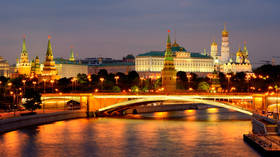‘We will die hungry’: Floods create havoc in North India, bringing death and destroying livelihood
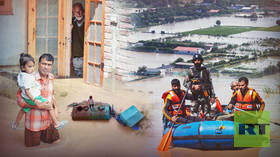
Muhammad Shaban Mir, 55, was emotionally on the edge following the week-long shutdown of the Jammu-Srinagar highway in south Kashmir’s Pulwama district. Kashmir valley’s sole road connection with mainland India was shut due to the weather situation and stranded his apple harvest.
The consignment, bound for Delhi, would have delivered Mir’s family of eight their yearly earnings. On Wednesday, Mir's fear turned to desperation as floodwaters swept away his three-acre orchard, destroying months of work overnight.
“We don’t know if we should save our animals, mourn these floods, or see our orchards gone underwater. We are heartbroken,” said Mir as he waited with his family to move from their home in anticipation of a water level increase.
Heavy rains since August have caused widespread flooding in Jammu & Kashmir, Himachal Pradesh, Punjab, Haryana, and Uttarakhand. Rivers burst their banks, dams reached their limits, and landslides added to the devastation.
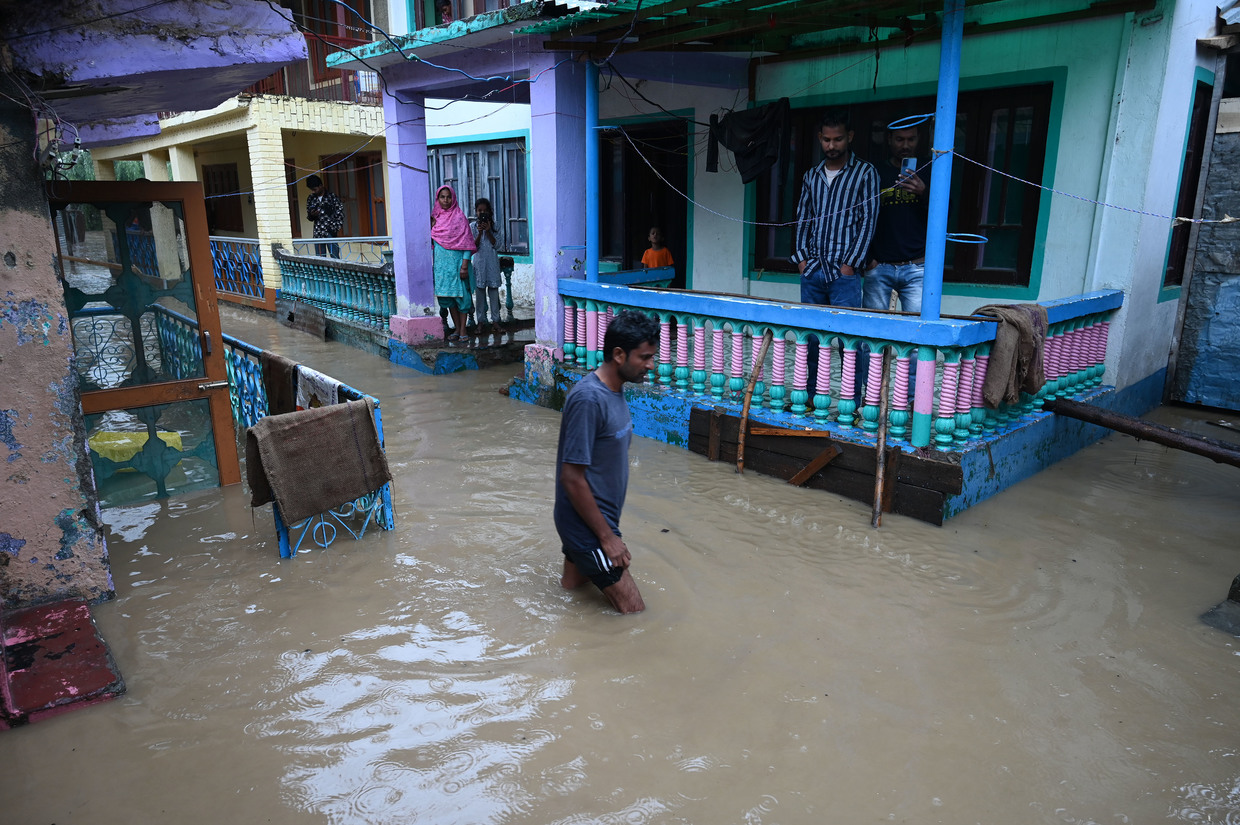
Officials say that floods have inundated thousands of houses, destroyed crops, and crippled infrastructure – roads, bridges, and electricity lines. Disaster relief agencies say this is the worst flooding since the mid-1980s, with large-scale rescue efforts still ongoing.
“Our field teams are monitoring the situation. We have directed some preventive evacuations. Police and disaster officials have given advisories, and they need to be followed. People in low-lying areas need to relocate to safer locations. We have identified 300 buildings in different districts where we made sure all basic facilities are available. We have sufficient essential supplies available; people need not panic,” Divisional Commissioner of Kashmir Anshul Garg said.
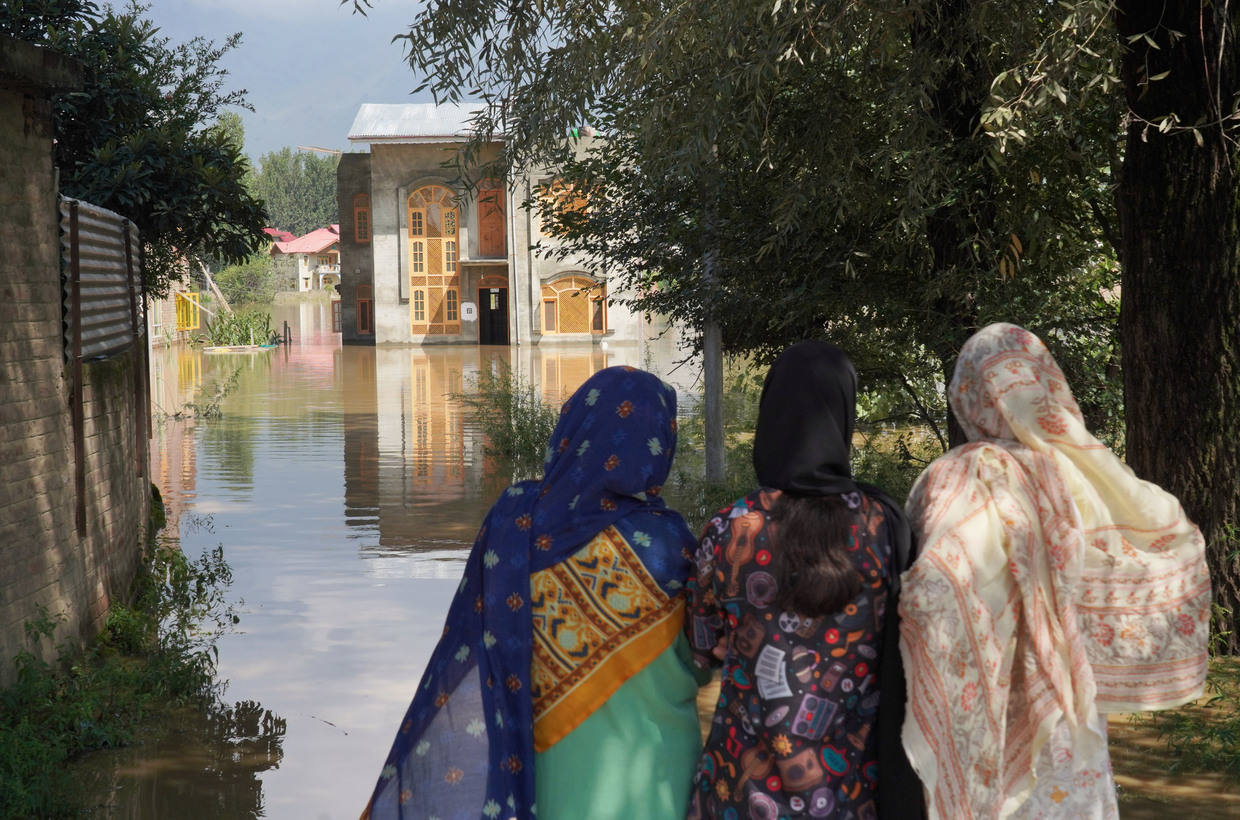
Devastation in Jammu and Kashmir
In Jammu, which has witnessed heavy rainfall, flash floods forced the army to transport the elderly and children over inundated streets and lowlands. Rising rivers halted the Vaishno Devi Yatra pilgrimage, with schools and markets shut as the Tawi and Chenab rivers rose above danger levels. Thousands remain in temporary camps in anticipation of deteriorating situations.
“We haven’t slept for a week, not knowing if our house will stand at the end,” said Shamim Choudhary from Gujjar Nagar. “We witnessed one flood and were cleaning up when another threatened. I have three children – we don’t know where to go,” she added.
Cloudbursts, landslides and flash floods have claimed more than 100 lives in Jammu, with pilgrims traveling to the Vaishno Devi temple in the Katra area of Reasi district especially affected. Road connectivity has also been disrupted.
In Srinagar, the capital of Kashmir, the government remains on red alert as river levels rise. A breach in the Jhelum river inundated scores of villages in Budgam on Wednesday. Locals and experts say the Jhelum, considered to be the lifeline of Kashmir, has become more prone to flooding due to silting, encroachment, and erratic rainfall.
“It reminds me of the floods in 2014 in Kashmir, when we lost everything,” said Srinagar resident Amin Ahmad.
People have parked cars on highways to keep them out of floodwaters, as volunteers lined riverbanks with sandbags.
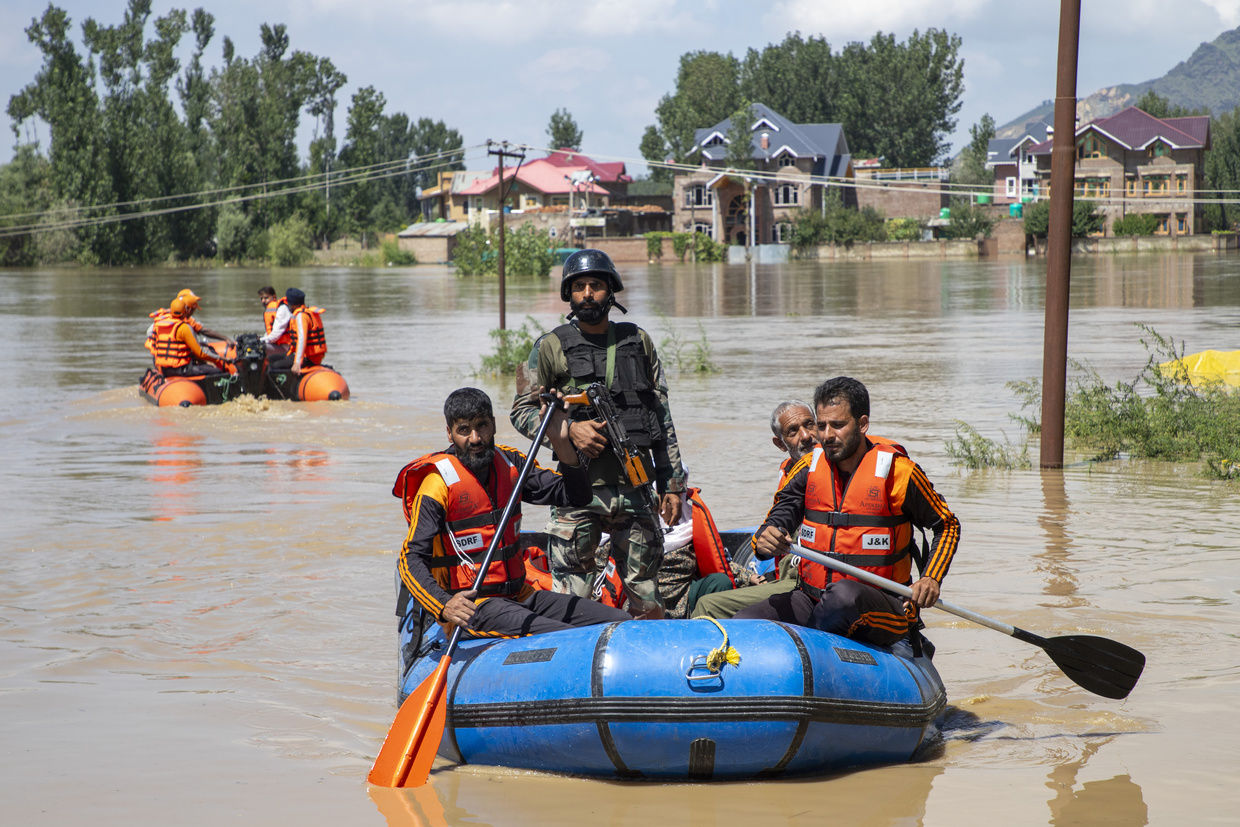
Crops lost to flooding
In the state of Punjab, more than 1,400 villages were flooded, as the Raavi, Beas, and Sutlej rivers are overflowing. More than 250,000 acres of paddy and sugarcane were destroyed, and poultry farms lost a million birds. Punjab has declared 23 districts flood-affected.
”All the farmers have lost their crops and livelihoods. I lost my entire year’s harvest. This is a big loss for all here,” Hoshiar Singh of Ferozepur, a city on the Sutlej River, lamented. Schools and colleges are closed until September 7 and rescue teams continue evacuations. “Farming is our bread and butter. We will die hungry," he added.
In Punjab, 29 lives were lost in the floods, over 120,000 homes damaged, and some 3.5 million people affected. Rahul Gandhi, the Congress party leader, has requested Prime Minister Modi to declare a special relief package for affected areas in Punjab, Jammu & Kashmir, Uttarakhand, and Himachal Pradesh.
Modi called Punjab Chief Minister Bhagwant Mann promising help and support.
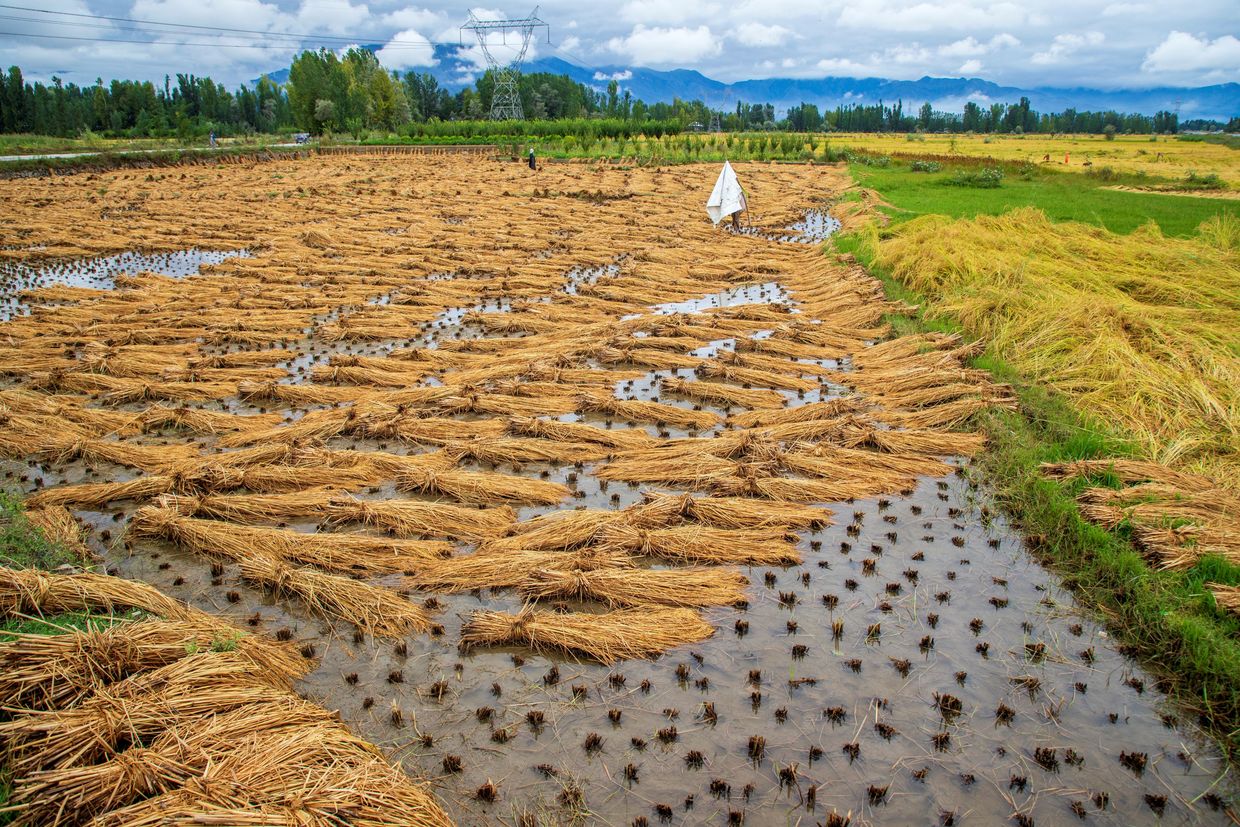
Collapsed infrastructure
In the nearby Uttrakhand state, social media videos shared by locals show harrowing scenes of collapsing bridges, cars being swept away, and desperate people escaping landslides across the mountainside villages.
“My five family members had a narrow escape. Big rocks hit our car when we were trying to relocate to a safer location. We got a new life,” Manjula Rawat told reporters.
Rawat, whose family runs a guest house in Uttarakshi, said that her father is critically ill and needs oxygen supplies frequently.
“He was also in the car. We saw death closely. The situation has made us realise how volatile life in the mountains is,” she added.
Experts across India have blamed deforestation, floodplain invasion, and uncontrolled slope cutting for infrastructure projects as aggravating the damage, particularly in regards to landslides and the degradation of natural river courses.
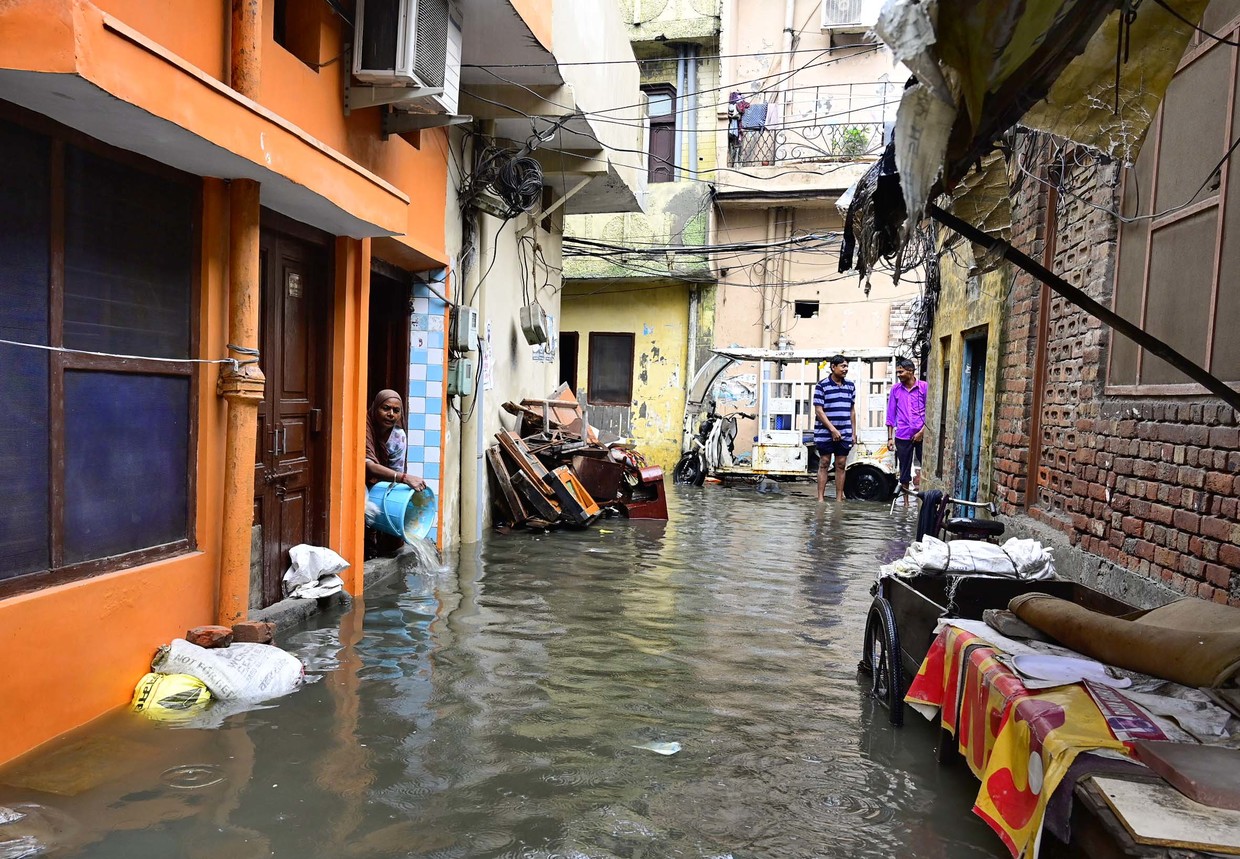
Since August, the states have witnessed rainfall far exceeding the season’s average, making these the worst floods North India has experienced in four decades. Nine people lost their lives in landslides in Himachal Pradesh and Uttarakhand, where schools remain shut as disaster warnings persist.
“Highways and tunnels carved into mountains, forests cleared, hydropower projects along river valleys, and uncontrolled tourism infrastructure are disrupting river systems that cannot adapt,” Irfan Ahmad said.
The environmental activist in Jammu went on to say that "unless there is a change of priority and the Himalayan ecosystem is protected, every flood and landslide will be more intense than the last one. Resilience will only be achieved when development and ecology complement each other.”
Himachal Pradesh-based activist Guman Singh echoed Ahmad’s views and said that unplanned construction near the river beds is entirely responsible for aggravating Himachal’s recurring tragedy. “The time has come to introspect our so-called development model, or else things will deteriorate even further.”








